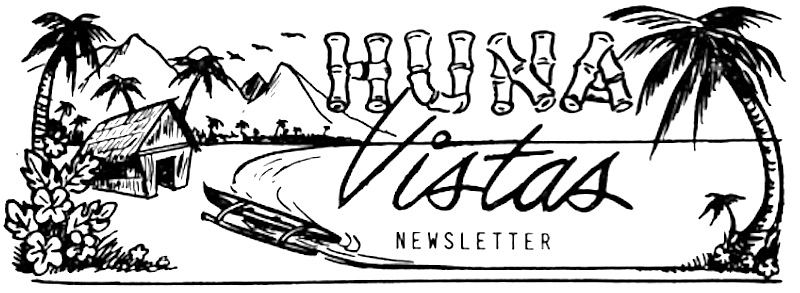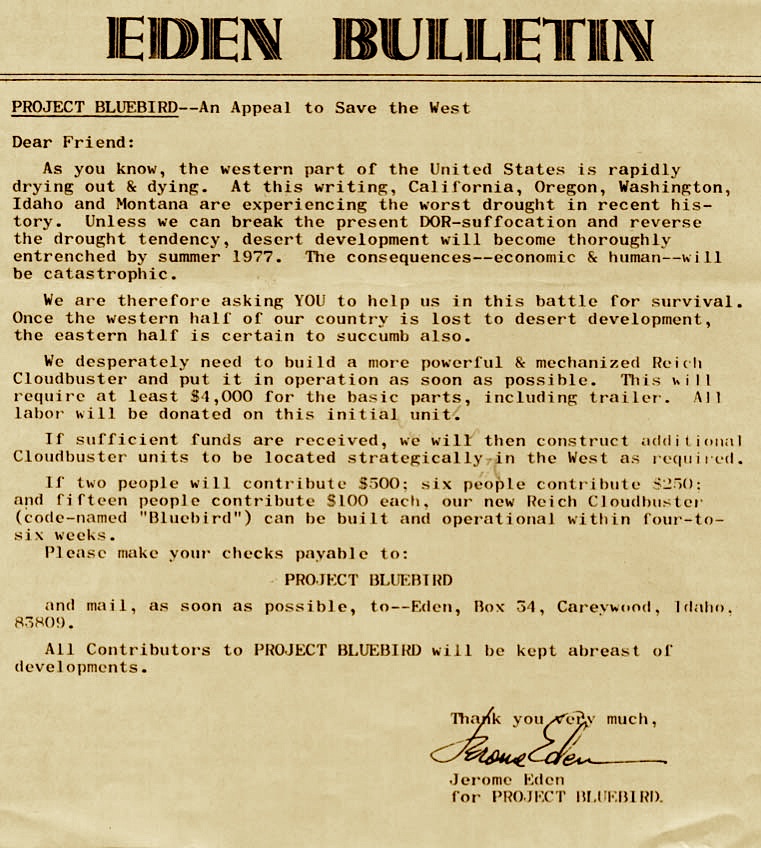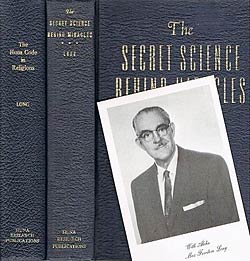
HUNA RESEARCH ASSOCIATES, 126 Camellia Drive, Cape Girardeau, Missouri 63701 USA
March 4, 1977
CIGBO HAS NEW HELPER – “KOPY-KAT”
NEW BOND COPIER EXPANDS HRA PRINTING CAPABILITIES – SAVES SPACE, TIME, AND MONEY!
A revolutionary, new printing system has been acquired for HRA headquarters and CIGBO has immediately dubbed it “KOPY-KAT” because of the instant copies it produces. (He adds, in traditional MFL/Cigbo fashion, that the name fits him PURR-fectly!) The bond copier promises to replace ALL of the following:
- Offset press, with messy inks, cleaning solutions, pads, fountain concentrate;
- Platemaker, with expensive plates, negative paper, developing solution, and expense of having plates made downtown;
- Mimeograph machine, stencils, inks, covers, pads, messy clean-up;
- Photocopy machine, which was limited by inconvenience of use, though it made excellent copies, but mostly by high cost of copy paper;
- Addressograph for mailings (eliminating cost of large numbers of stencils, for original file and changes of address), although this item doubles beautifully as an “instant rubber stamp” machine, and has many other uses such as processing enrollments in the Huna course;
- Carbon copies, which often are difficult to read because of corrections on the original; and as important as any of the above,
- Eliminates the need for large storage areas for stacks and boxes of extra copies of all printed items (a file of originals will take up little room, and a few or many copies can be made as needed). A big advantage in TIME is that we do not have to wait for copies to dry overnight before printing the other side, or folding.
A recent trial run on the equipment did a job in one hour and fifteen minutes that ordinarily would have taken six hours over a period of three days; the cost was less than half of previous methods!
Some of the BIG advantages:
- Everything is ALWAYS in print! Since Kopy-Kat copies virtually anything, every printed item (including all past issues of long out-of-print HRA Bulletins and Huna Vistas) can be made quickly.
- Instant revisions. We ran several thousand copies of the book list recently, only to learn that DeVorss had increased the price of all Huna books. Such changes are costly in copies that must be discarded. Now, we made a few copies at a time, as needed, and changes are made instantly on the original.
- Instant Design. Copy can be made up, run through the machine and at once see whether the final outcome meets expectations.
- Lighter-weight, less expensive paper can now be used, with perfect copies on both sides – a saving in cost of paper and will make a great difference in postage. For example, these papers are 16lb. bond paper; previously it was necessary to purchase 70 or 80lb. offset paper in order to get decent copy on two sides.
- Overhead transparencies are made instantly (these are useful for lectures).
- We recently saved the cost of having envelopes printed by copying our return address on gummed labels, for use on large envelopes.
- Saves storage space.
- Saves time. 9. Saves money.
DONATIONS NEEDED TO “FEE” KOPY-KAT!
How can you help? We need donations in any amount to help with the expense of paying for “Kopy-Kat” (who is actually a bond copier, of course). Any purchases of Huna books and the various HRA publications will also help. To play it safe, we have leased the equipment for five years (ownership will be transferred to HRA at the end of the lease period). Like an installment purchase, but carries a much smaller “interest” charge. Even so, the sooner we can pay off the full amount, the more can be saved. Three years ago, when we acquired a used offset printing press, several HRAs were generous in supporting Cigbo’s financial obligation. We hope that the same and even greater support will be given to this project.
A SPECIAL GIFT IS BEING PREPARED FOR ALL WHO SEND A DONATION IN ANY AMOUNT to the “Kopy-Kat Fund”.
ANOTHER WAY TO HELP is by finding new members for HRA.
=0=0=0=0=0=0=0=0=0=0=0
SOME EXPERIMENTAL CHANGES IN FORMAT AND PROCEDURES
We are having to face some of the realities of sharply rising prices and therefore greatly increased operational expenses. We want to keep the annual dues at the present rate as long as we can. At the same time, we want to give better services to members – and keep costs down. Postal rates have increased; paper and envelopes have risen drastically in price. For example, envelopes for our Bulletin have increased 500% in ONE year.
- This Newsletter and the accompanying Research Bulletin are printed on the new Kopy-Kat. There are several types of originals being copied: typed copy; paste-ups from printed material; copy printed from colored paper; even paste-ups of copy first printed on Kopy-Kat, then placed on a sheet for printing in the Bulletin (pp. 7-8). The new equipment adjusts readily to all these.
- These sheets are printed on light-weight (16lb.) bond paper, readily available and comparatively inexpensive, compared to our heavier 70 or 80 lb. offset paper, which has become rather difficult to obtain. We could not get enough of it to run this mailing. Both sides are easily printed, with clear copy, and practically no bleed-through.
- Two ways to save postage are being attempted. The lighter-weight paper will result in more sheet mailed for less money. A 12-page Research Bulletin requires 35 (cents) to mail. A 20-page one on this paper would be only 24 (cents) (or 14 (cents) for Third Class Mail, which is one of the possibilities being considered to save postage). Use of a printed cover sheet for the address eliminates the cost of envelopes at greatly increased prices, and worked well when used several months ago in a trial run. Even copies that were returned by the post office were still in good condition. We still plan to use envelopes when necessary to protect the contents.
- Use of single sheets (8 ½ x 11) rather than a large folded sheet (10 x 14) allows for much broader scope in the use of material. It is not necessary to limit the material to a bulletin of 8, 12, or 16 pages (folded sheet resulting in four pages each). Much material on hand can be used without re-typing. This also allows us to use the collating machine to assemble the pages before stapling. A folded sheet cannot be used in the collator and the sets must be assembled by hand – a time-consuming activity. You may also find these pages easier to file, such as in a ring binder.
NOTICE === ALL HUNA BOOKS PUBLISHED BY DEVORSS HAVE A PRICE INCREASE.
Our last order from DeVorss, who publishes for us the six hardbound books by MFL, reflected a price change on all volumes. New prices are as follows (postpaid): SSBM & SSW = $7.50; GIL, SS, & PA = $5.50; HCIR = $8.50
PLEASE MARK YOU COPY ACCORDINGLY
LATEST INFORMATION ON THE “HUNA SEMINAR” – APRIL 15-17, 1977
- Nearly 200 registration kits were mailed February 3rd to those who had sent in the “Interest” slip or specifically expressed interest in attending the Seminar. These were not mailed to the general membership, but only to those who had responded previously.
- IF YOU ARE INTERESTED, but did not receive the registration kit (reservation blank, Newsletter, and return envelope), please write for one. We did not mean to leave you out.
- Here are the essentials: Date: April 15-17, 1977; starts 5p.m. Friday. Place: Pere Marquette State Park Lodge, Graffton, Illinois (north of St. Louis, Missouri on the Mississippi River.) Special Guest Speaker is Sam Lono, Tahuna from Hawaii. Note: First-Come-First-Served basis on reservations for Lodge room and cottages; after these are filled, reservations will be made for you in local motels. Very late reservations can be taken only if you make your own room arrangements (we’ll give you all the help we can). SEMINAR FEE of $55.00 must be sent with reservation (this is the fee per person, for all activities of the seminar, and includes the Saturday night banquet). All other meals and room charges are to be paid directly to the Pere Marquette Lodge (or local motel). THERE ARE NO SINGLE ROOMS IN THE LODGE OR COTTAGES. (Rates are $18 for two persons in a room – per night; $22 for three in a room). TRANSPORTATION will be provided from the airport in St. Louis; or bus terminal; or Amtrak. Registration form provides for giving EXACT details of your arrival plans, including flight numbers and airlines, if you need transportation.
- Program director, Mary Jo Gulden, has just returned from Hawaii, where she has made final arrangements with Sam Lono for the program. Some interesting sessions are being planned, with as much flexibility as need for Guidance to direct. Among discussions will be the Hawaiian Moon Calendar and its meaning, kumulipo (the source), herbs and healing methods.
- IMPORTANT! Registration/reservations are to be sent to Ann Pannuto, 7819 Gannon Ave., St. Louis, MO 63130. If you have questions about accommodations or registering, you may call Ann at (314) 862-1959.
HUNA BOOKS FOR LIBRARIES
Many learn about Huna and HRA when they see one of the Huna books in a library – public or college. Several only recently have mentioned library copies as their introduction to Huna. We need to place more copies in local libraries. The best way is for you to do this personally – go to your local library and see if the Huna books are there. Sometimes libraries add volumes on request. Staff members of colleges and universities can usually ask for certain books to be placed in the library. Anyone can DONATE books. We are planning to start donating sets of Max Freedom Long’s books to as many libraries as we can, as funds are made available.
If you wish to participate, we will be glad to ship the books you order directly to the library you designate, with notice of who is donating them. Or, order copies to be taken personally by you to the library.
A recent movie, “Carrie,” used MFL’s book, Secret Science Behind Miracles, in an early scene. Several HRAs have written to tell about this bloody “thriller.” I have not seen it. A young girl has several “weird” experiences (objects moving); she goes TO A LIBRARY to find out what was happening to her. In the card catalogue, the entry on SSBM is plainly visible, and so is the book when taken from the library shelf. Then a definition of telekinesis is shown. All this takes only a brief time, and it is not a desirable place to have this book mentioned. But it does point up the importance of having our books in local libraries.
Another way you can help is to check your local library to see if the Huna books are there – especially strategically located libraries. Send us the name of the library, with address and name of person in charge, if possible. We’ll work toward putting books in as many as possible.
PROJECT BLUEBIRD
A CALL FOR HELP FOR THE VICTIMS OF SEVERE WATER SHORTAGE IN THE WESTERN STATES
The following notice was received from Jerome Eden, whose articles appear in the current HUNA VISTAS RESEARCH BULLETIN No. 21. He is a qualified operator of the weather control device which Dr. Wilhelm Reich called a “Cloudbuster”. He is also registered and licensed by the proper government agencies, and constantly repeats warnings that dabblers in areas of orgonomy should NOT “experiment” with weather control or Cloudbusters. Too many dangers are involved, not only for such “experimenters” but also for others who will be affected. Here is the letter:


